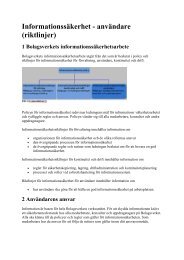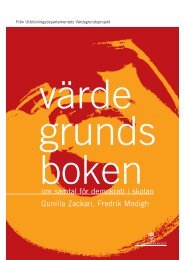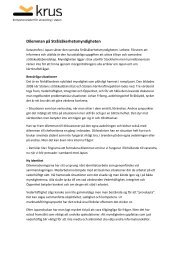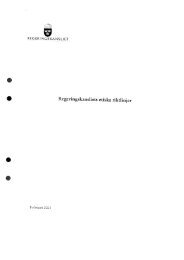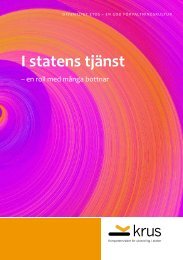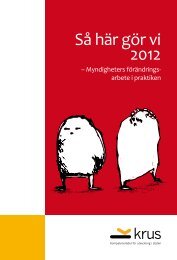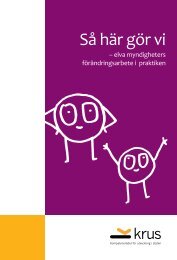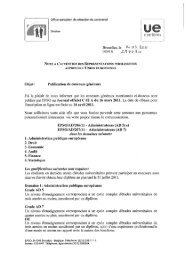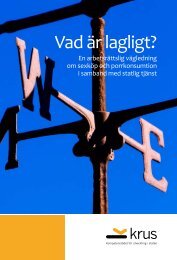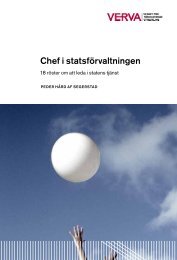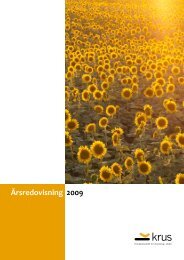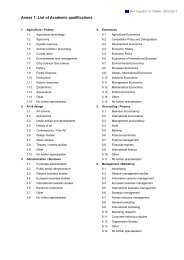Dialogkompetens i skolans vardag - Publikationer - LTU - Luleå ...
Dialogkompetens i skolans vardag - Publikationer - LTU - Luleå ...
Dialogkompetens i skolans vardag - Publikationer - LTU - Luleå ...
You also want an ePaper? Increase the reach of your titles
YUMPU automatically turns print PDFs into web optimized ePapers that Google loves.
4 A.-C. Wennergren<br />
I have worked for many years in classes with hard-of-hearing pupils and you might say<br />
this has been authoritarian and very controlled by the teacher. I haven’t thought of the<br />
idea of peer learning; this is something new. It is embarrassing, but I have to admit that<br />
it is in fact a new perspective (Wennergren, 2006:150).<br />
During the improvement project, the teachers were encouraged to introduce a<br />
wireless and more flexible technical system. The new technology did not have<br />
to be activated, since the hearing loop was always connected when the system<br />
was being used. The arrangement of the furniture was altered so as to include<br />
a central group table for dialogues with opportunities for pupils to use the<br />
hearing loop. In this environment the students had the physical opportunities<br />
to take responsibility for listening. They could choose either to use the<br />
hearing loop (the hearing aid at t-setting) or to use the microphone of their<br />
hearing aid (the hearing aid at m-setting).<br />
However, during the process of change it became a challenge for the<br />
teacher to maintain a balance between the technologies and to create<br />
opportunities for dialogues. In a limited evaluation study comprising a<br />
number of students aged between 13 and 16, the results highlighted the<br />
problem: whilst the new technology was a positive experience for most pupils,<br />
it was at the same time a negative experience for some (Wennergren 2004).<br />
The longer distance between the microphone and the speakers captured more<br />
background noise. Some pupils mentioned this as disturbing the perceived<br />
sound quality. On the other hand, some pupils saw the background sound as<br />
a ‘‘positive sense of being present’’. It made a difference to be aware of<br />
everyone’s comments, which they had often missed when using the traditional<br />
technology. When the sound was turned off individually, they could not<br />
always know which parts of the whole situation they might have missed.<br />
According to the pupils’ responses, the new technology provided situations<br />
where it was possible to grasp ‘‘the whole picture’’.<br />
In the current study the words ‘‘learning environment’’ are intended to be<br />
defined in a more holistic way, i.e. including a wider perspective than just the<br />
physical environment. The classroom setting, activities, as well as attitudes<br />
are included in the concept. The term ‘‘listening environment’’ is based on<br />
the same perspective but instead of learning, listening is in focus. For a hardof-hearing<br />
person not only hearing but seeing is an essential part of the<br />
prerequisites for listening. Referring to the aims of the Swedish compulsory<br />
school curriculum, the learning environment is supposed to be multi-voiced,<br />
where the teacher knows how to support language development from a<br />
holistic perspective. A multi-voiced classroom implies that four elements of<br />
the language, i.e. speaking, listening, writing and reading, are practised and<br />
used consistently (Liberg 2003). These four elements should not be focused<br />
on separately, as fragmented skills; instead it is intended that they are<br />
worked with as part of a holistic meaning-making interplay (National Agency<br />
of Education 1999). The classroom dialogue thus involves at least two<br />
roles, the listener and the speaker, both of whom are dependent on one<br />
another (cf. Bakhtin 1981). The role of the speaker is easy to support and<br />
value, while the role of the listener can be more difficult to define and



